Rashid Mahdi
Pioneer Photographer, Photojournalist and Film Maker

Above, the clear, frank gaze of a young man with a life all before him. Framed in soft, painterly light, “Young man with scarifications”. is one of Rashid Mahdi’s many studio portraits, (photo; Wikicommons). The self-taught photographer was fascinated by the play of natural light on faces and would meticulously rework his portraits until he found what he defined as perfect levels of illumination and tint. “I imitate the sun”, he explained. He worked at a time considered by many as the golden age of freedom and creativity for Sudanese photography (1950s-1980s), as the colonial gaze gave way to a Sudanese reality seen through Sudanese eyes. Rashid Mahdi is credited by many with founding Sudan’s first Sudanese-owned photographic studio, in the early 1950s, Sudan’s first large printing press in 1958 and directing* one, if not the first of Sudanese feature films, “Hopes and Dreams”, in 1969-71.
* correction, June 2023; he was in fact director of photography of the film Hopes and Dreams. My thanks to Manfred Ewel for this clarification.
You can see more of Rashid Mahdi’s portraits – see for example his beautiful A Sudanese Woman, evoking the spirit of post-independence Sudan in
Rashid Mahdi Elnour FABA Vintage: Portraits of Sudan
quaibranly.fr Dans la Lumière de Khartoum
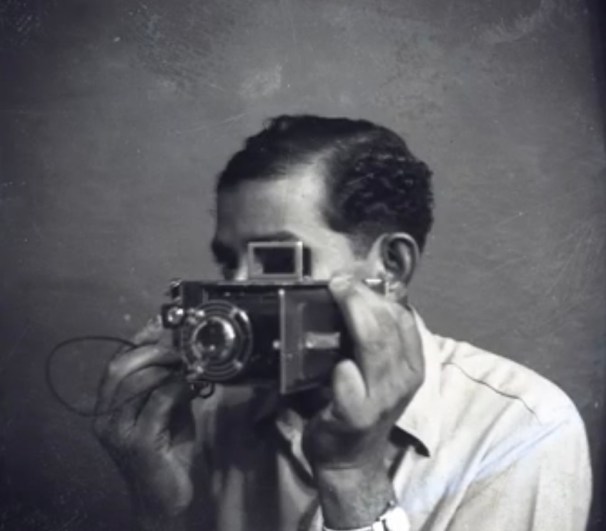
Above, Rashid Mahdi behind the lens.
Setting the Scene
Pioneer Photographer, Photojournalist and Film Maker
Setting the Scene
This week’s post offers a brief sketch of the work of a remarkable photographer and tireless documenter of pivotal moments in modern Sudanese history. Thanks to the work of Claude Iverné, the exhibitions he inspired and his invaluable ELNOUR Sudanese photography collection, Rashid Mahdi’s work is becoming better known outside Sudan. Rashid Mahdi’s unique photographic record, an archive now curated by his son, Amin Al-Rashid, of Atbara’s railway workers, their union leaders and their stand against colonial exploitation served to galvanize Sudan’s independence movement. The centre piece of this article is Hassan Kamil’s 6-minute film tribute to Rashid Mahdi, (English subtitles), featuring stunning photos by the photographer and embedded below.
Read about Rashid Mahdi in Spanish in:
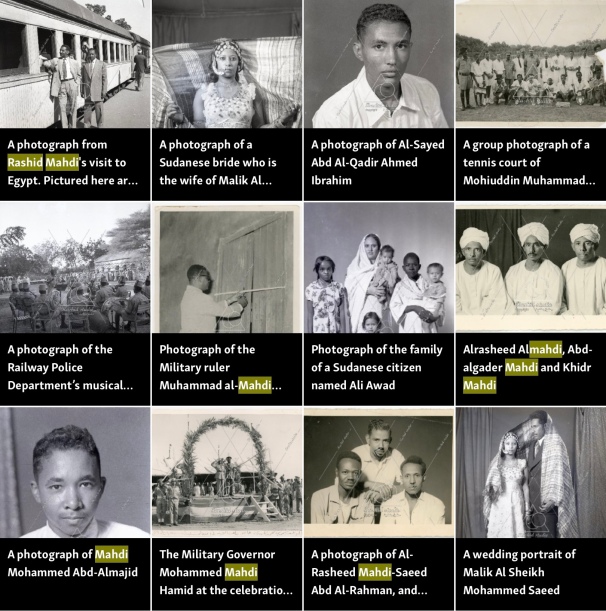
Above, just a few of the hundreds of Rashid Mahdi’s photos available to view, thanks to the long-standing collaboration of his son, Amin El Rashid, with Sudan Memory
Pioneer Photographer, Photojournalist and Film Maker
Photographer
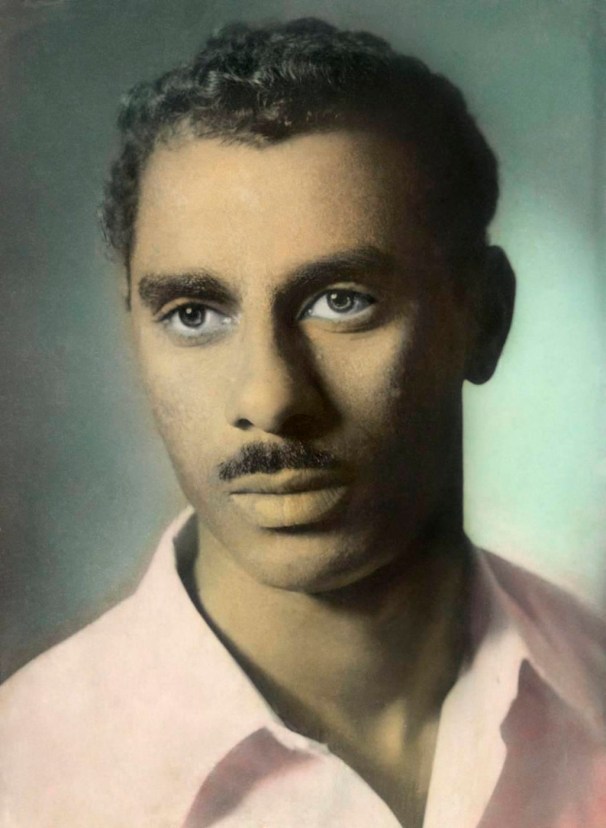
Although reports of the date of Rashid Mahdi’s birth vary (1923, 1925, and 1931), accounts agree that he was born in Moura and moved at a young age to Atbara with his father. He was educated in Atbara and later in Omdurman, where, first in his class, he graduated as a carpenter from industrial college / Gordon College. In 1949 he joined the Atbara railway workshops. It was in the 1940s, according to his son, that he developed a passionate love for photography.
Fascinated by the camera of an Armenian (some sources say Greek) street photographer whom he befriended – Rashid Mahdi is said to be the first Sudanese to acquire a camera, he went on to design both a technically skilled wooden “illuminate” or field camera he built himself and a developing system for prints, reflecting a life-long approach as an experimenter and researcher in the field. Working without a flash, he relied on and valued natural sunlight in his street scenes, documenting both the old town of Atbara and the industrial City of Steel and Fire it was to became. Determined to overcome the lack of professional photographic resources in Sudan at the time, he corresponded regularly with Kodak in London and in 1957 was invited to visit Kodak’s Cairo office where his photographic skills impressed his hosts. Photo above left, studio portrait by Rashid Mahdi, Wikicommons.

Rashid Mahdi went on to document daily, artistic and musical life in Atbara as well as enjoying commissions by the British to photograph visiting colonial dignitaries – including Prince Philip, as the city grew into a key industrial and transport hub. He also captured scenes from the city’s Indian, Yemeni, Greek, Abyssinian and English communities and would go on to photograph both eminent Sudanese politicians – Ismael Al-Azhari, Sadig al-Mahdi and Numeiri, among many others, and visiting foreign leaders such as Nasser. In addition to his police and military scenes, Rashid Mahdi was the author of rare photographs of Sudan’s first pilots.
The subjects of his studio portraits – young men, young women, families, his children, brides and grooms, wedding scenes, young soldiers and even prison inmates, are captured with a delicate, almost tender formality, allowing us glimpses of openness, confidence and vulnerability. The portraits are a poignant record of the dreams and aspirations of Sudanese of the post-independence era. Photo above right, still from Hassan Kamil’s film.
Pioneer Photographer, Photojournalist and Film Maker
Photojournalist
“Son travail sera dans une résistance permanente…” Claude Iverné, quoted in Dans la Lumière de Khartoum

Rashid Mahdi’s British photographic commissions were to prove a vital catalyst to the nationalist cause in Sudan. Sudanese sources note that his beautifully staged scenes of the railway workshops and their immaculately appointed train carriages, printed in the Times to illustrate a fulsome article by “Mrs Parker” on the city’s encouraging potential, drew the interest of prominent Sudanese journalists such as Ahmed Yusuf Hashem and they came to Atbara to see the city for themselves. What they saw, however, was the low wages, poor housing and segregated quarters of the Sudanese workers, and the reports they filed served to ignite anti-colonial feeling and the drive for independence, as well as pushing the British into recognizing Atbara’s unionized labour force. Rashid Mahdi continued to provide photos for the Sudanese press after independence, covering the political events of the day and for that reason he is recognized by many as Sudan’s first photojournalist.
“I think there’s nothing static. Everything is dynamic”; Rashid Mahdi’s words on photography, quoted by his son.
See a review of Ahmad Alawad Sikainga’s City of Steel and Fire – A Social History of Atbara, Sudan’s Railway Town, by Peter Woodward for more context.
Pioneer Photographer, Photojournalist and Film Maker
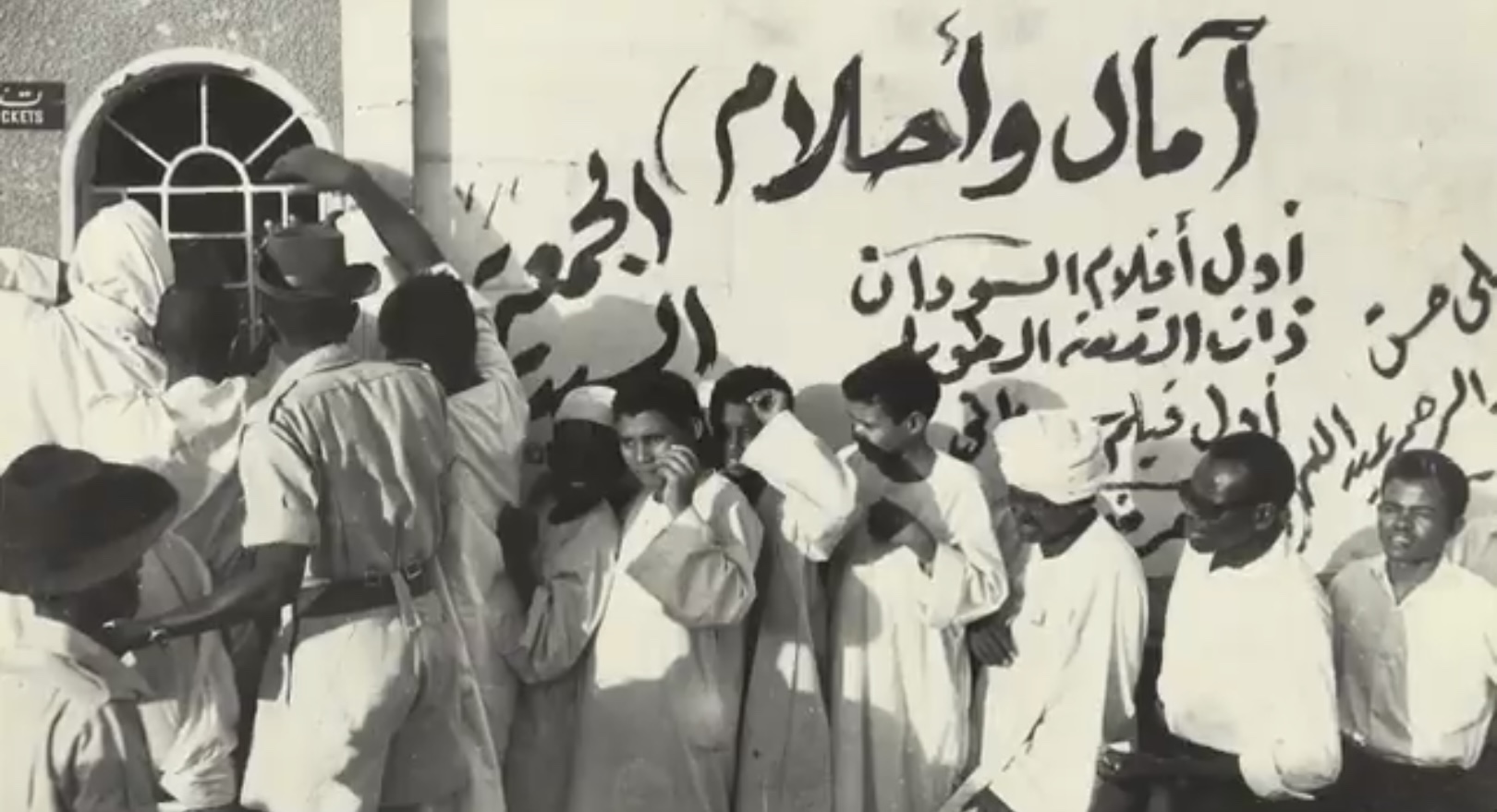
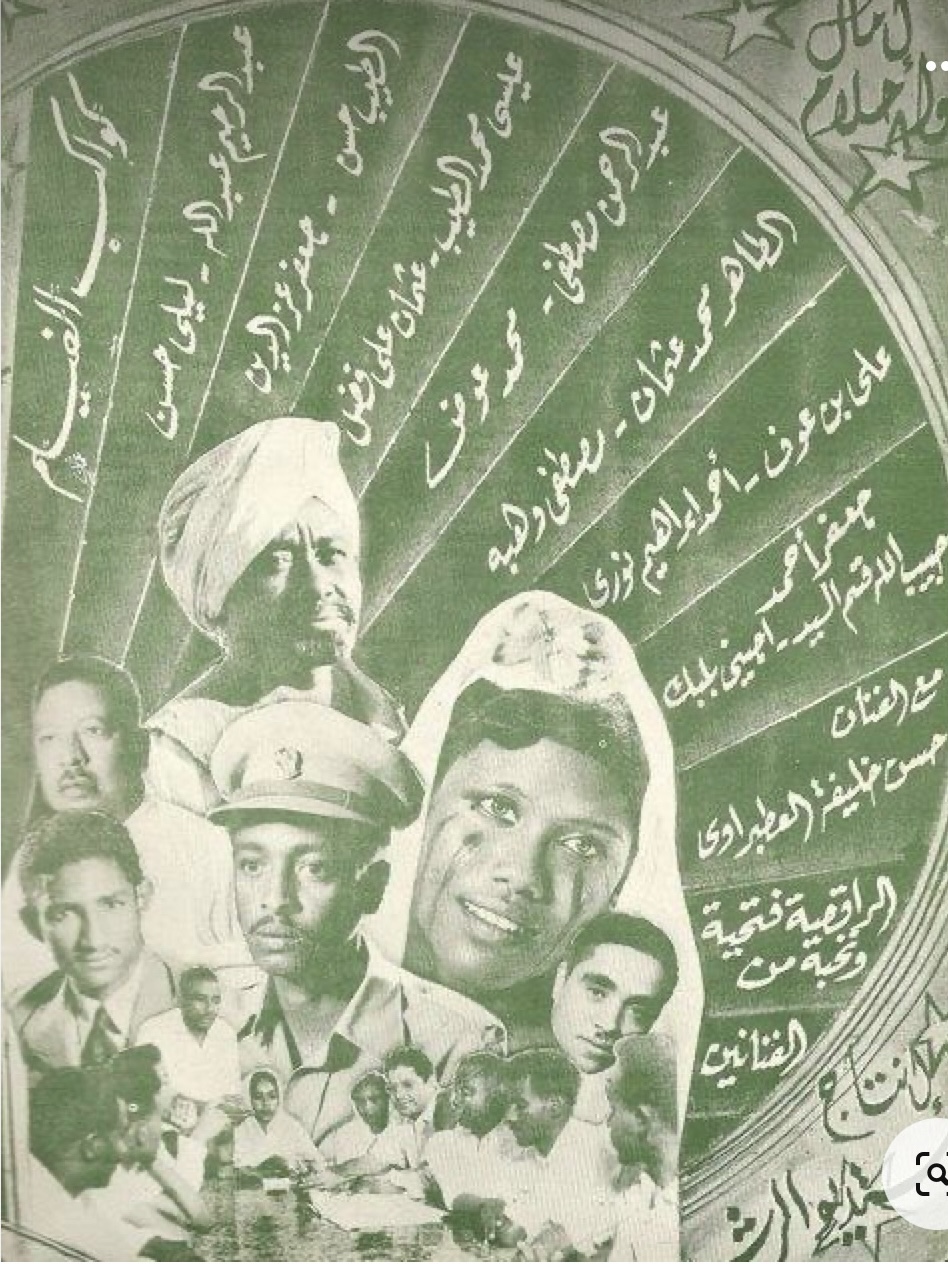
Film Maker
Rashid Mahdi had filmed documentaries and authored film scripts and numerous plays critical of the British occupation before embarking on the filming of Hopes and Dreams, 1969, (promotional poster pictured above). Sudanese sources relate that Rashid was spurred on to make the film after hearing disparaging comments made by Egyptian actors touring Sudan, insisting the country had neither cinema or talent for it. He picked up the gauntlet, overcoming the challenges of sparse resources to a film enthusiastically received both at home and internationally, and featuring a female lead, Leila Hassan, whose character escapes the hold of her family. The film did much to dispel unease surrounding women acting and singing in public, with Leila Hassan stressing in interviews that she had the full approval of her close male family for her acting role. See too الرشيد مهدي ومخرج وبطل وبطلة فيلم آمال وأحلام
Hopes and Dreams was invested with great hopes too, Sudanese sources tell us, as the first of what would be many Sudanese films to fuel a burgeoning Sudanese cinema industry – hopes, in the opinion of some cultural observers, yet to be realized.
Below, Hassan Kamil’s stunning six-minute film, subtitled in English, featuring examples of Rashid Mahdi’s portraits, his photojournalism and accounts of his life and work narrated by his son, gifted photographer in his own right, pictured below.
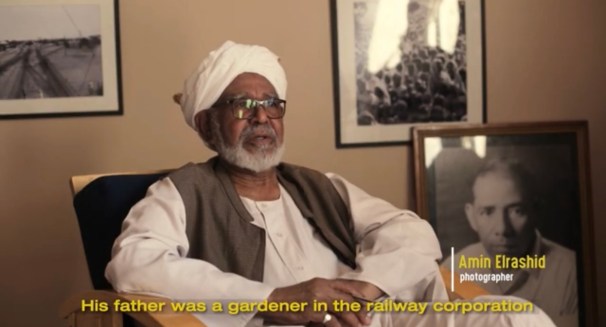
Elrashid
Sources and Links of Possible Interest
Exploring the Modern Art Movement of Sudan
Sudanese Cinema: Past, Present and Future
Discovering Sudanese Photography
The Status of the Cinema Industry in Sudan
Sudanese Cinema; Past, Present and Future
Can Sudan’s creaking colonial railways...
آمال وأحلام أول فيلم سينمائي سوداني روائي طويل تأليف
الاستاذ الرشيد مهدي …أول مصور صحفي سوداني
الرشيد مهدي ..السينمائي السوداني الأول (1
رائد التصوير الفوتوغرافي والسينمائي في السودان
This is a cultural post for Women’s Education Partnership.

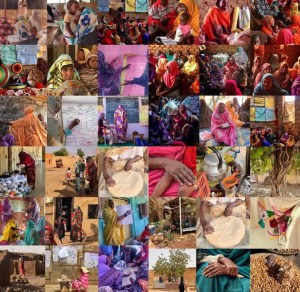
Learn more about our women’s literacy, orphans schooling and university scholarship projects programmes below:
Opening Doors – Our Women’s Literacy Programme
Our University Scholarships – giving bright young women the chance to go to university
Scenes from Our Orphans’ Schooling Programme and From Hardship to Hope Our Orphans Schooling Programme

